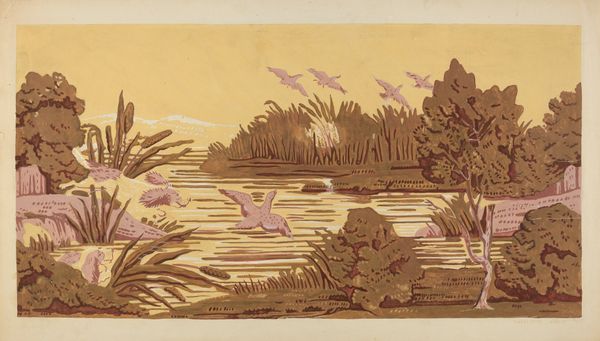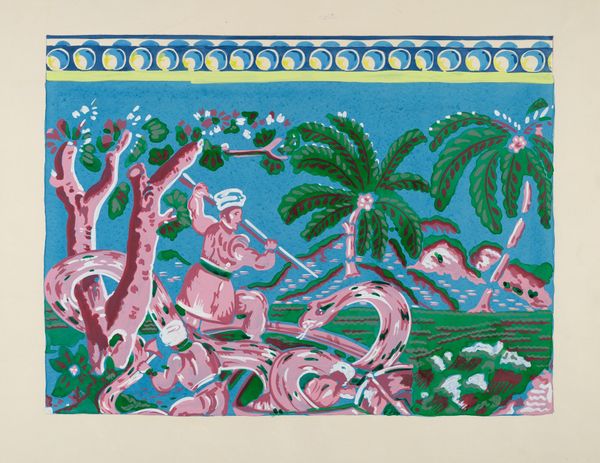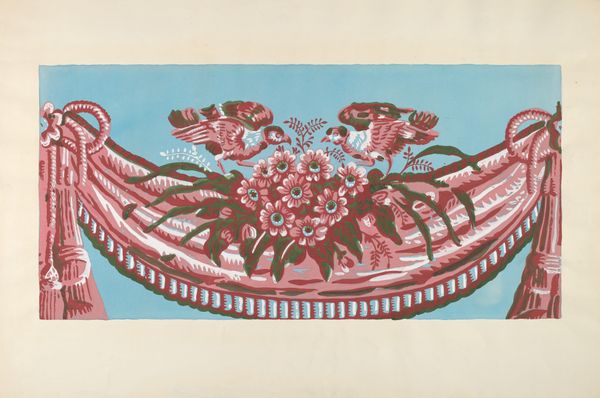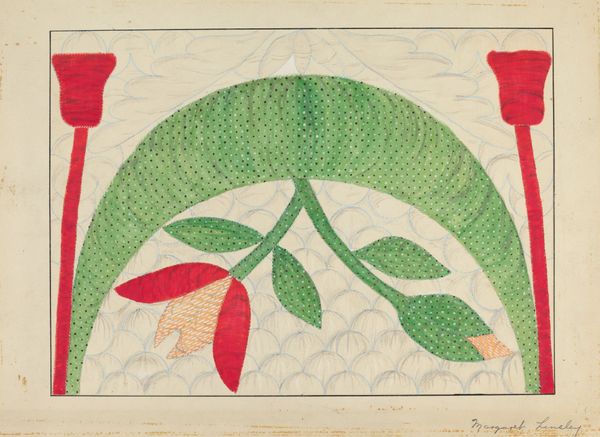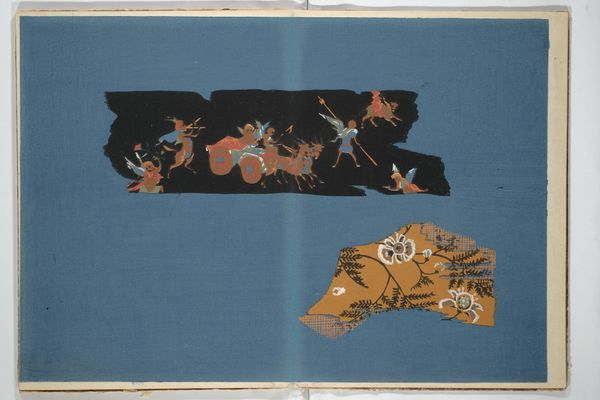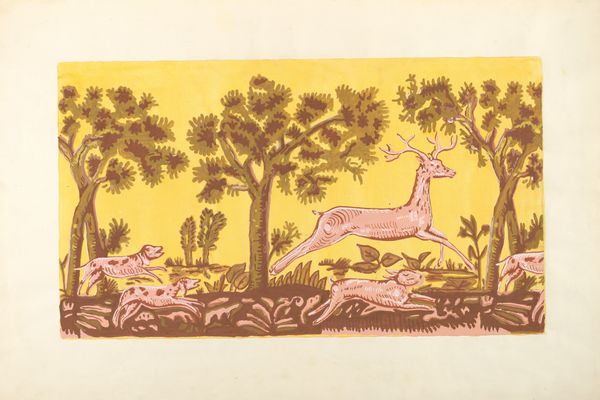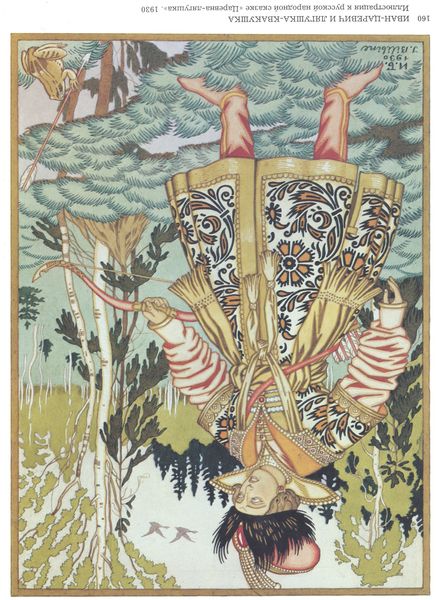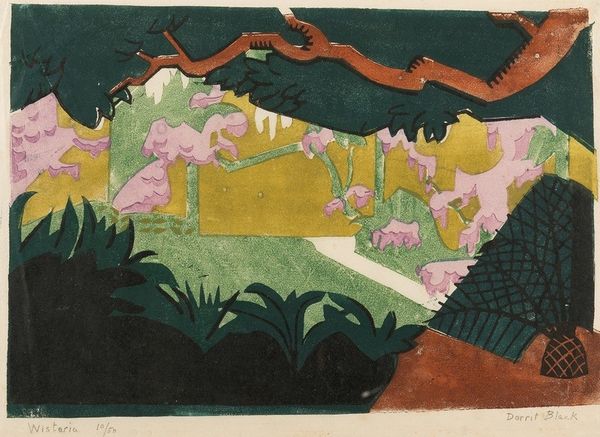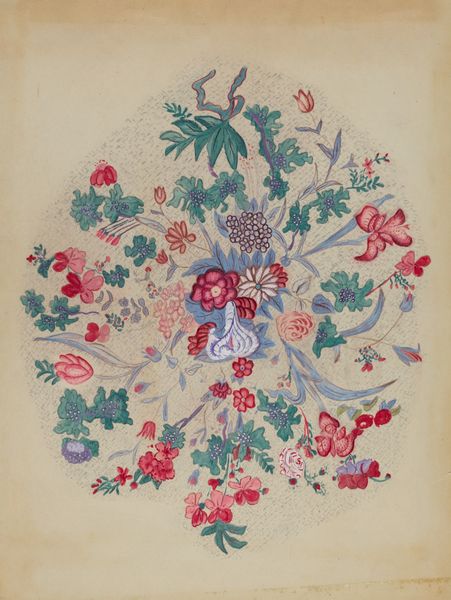
drawing, painting, watercolor
#
drawing
#
water colours
#
painting
#
landscape
#
watercolor
#
folk-art
#
naive art
#
watercolor
Dimensions: overall: 44.1 x 69.8 cm (17 3/8 x 27 1/2 in.)
Copyright: National Gallery of Art: CC0 1.0
Editor: So, this is "Bandbox Design (Eagle and Rabbit)" from around 1936, done with watercolor and other paints. It's... unusual. The colors are so vivid and the scene itself is quite striking. The eagle feels both powerful and strangely whimsical. What catches your eye about this piece? Curator: Well, it's easy to get caught up in the "folksy" narrative, but let's look at the material realities. It's a design, likely for mass production. The careful watercoloring, the repetitive motifs… all speak to an industrialized process aiming for a specific market. Consider bandboxes themselves – humble objects of everyday use, often adorned with scenes like this to enhance their appeal and marketability. Do you think the artist intended any tension between the noble eagle and its mass-produced application? Editor: That's a perspective I hadn't considered! It does feel like a contrast - this national symbol reproduced for purely consumer purposes. Does the medium play a role in how the imagery functions as an identifier, then? Curator: Absolutely. The cheap and fast reproduction using watercolors, a medium readily accessible, democratizes the symbol. It detaches the eagle from any elite, painterly tradition and places it firmly in the realm of mass culture and everyday consumerism. The image itself becomes a commodity. What does that commodification do to the eagle's symbolic power, do you think? Editor: It sort of...cheapens it? Making it commonplace normalizes what was once elevated. It's really fascinating to think about art like this, in terms of production and consumption, not just aesthetics or symbolic meaning. Thanks for widening my perspective! Curator: My pleasure. By examining the artwork's materiality and its position in the marketplace, we gain a much richer understanding of its cultural function and meaning. It’s about seeing the social context embedded in the very materials of its making.
Comments
No comments
Be the first to comment and join the conversation on the ultimate creative platform.
